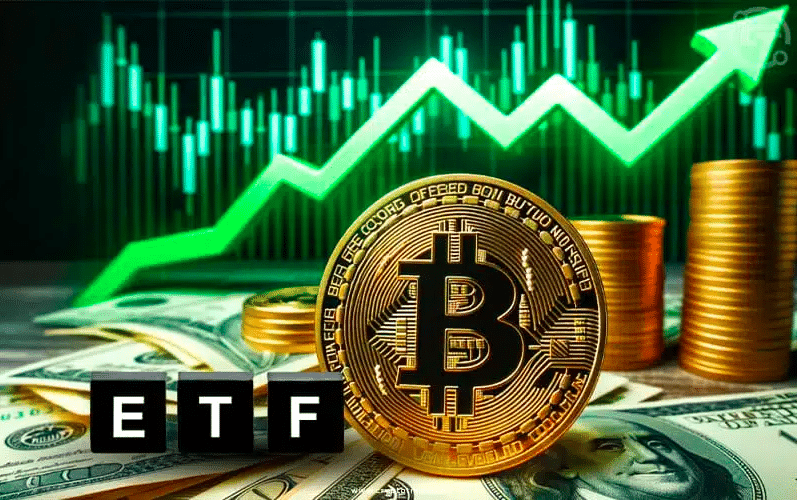After Weeks of Bleeding, Bitcoin ETFs Are Finally Fighting Back
For the past five weeks, the U.S. spot Bitcoin ETFs have been in bad shape—hemorrhaging over $5.4 billion as investors dumped their holdings. But now, the tides are turning. On Monday, these funds saw their biggest single-day net inflows in six weeks, with a massive $274.6 million pouring in. What changed? And why does this matter for Bitcoin’s future?
Understanding Bitcoin ETFs and Why They Matter
Before we dive into what’s happening, let’s break this down:
🔹 What is a Spot Bitcoin ETF?
A Spot Bitcoin ETF (Exchange-Traded Fund) is an investment product that allows people to buy Bitcoin without actually holding it. Instead of dealing with private keys and wallets, investors can trade shares of these ETFs like stocks. These funds buy and hold actual Bitcoin, and their price follows Bitcoin’s market price.
🔹 Why Have They Been Struggling?
For the past month, these funds have faced heavy outflows, meaning investors were withdrawing money instead of investing. A total of $5.4 billion left these ETFs, showing that many big investors were either:
- Taking profits after Bitcoin’s recent price surge
- Moving their money elsewhere due to market uncertainty
But Monday changed everything. Suddenly, investors poured money back in, making it the biggest positive move since February 4.
What Caused This Sudden Shift?
1️⃣ Bitcoin’s Price Has Stabilized
Bitcoin had a wild start to March, swinging between $78,500 and $94,000. This scared off some investors. But now, the price has settled around $83,000, giving the market more confidence.
2️⃣ Institutional Investors Are Making Their Moves
Big players (think hedge funds, pension funds, and asset managers) rebalance their portfolios at the end of each financial quarter. This means they adjust their holdings, and for some, this includes adding Bitcoin ETFs.
3️⃣ Lower-Fee ETFs Are Gaining Popularity
Not all Bitcoin ETFs are the same. Some charge higher fees, which can eat into profits. Recently, investors have been shifting towards ETFs with lower fees, which contributed to the rise in inflows.
Who Benefited the Most?
Not all Bitcoin ETFs saw the same level of growth. The biggest winners were:
🏆 Fidelity’s FBTC – $127.3 million in inflows (the leader of the day)
🏆 Ark & 21Shares’ ARKB – $88.5 million in inflows
🏆 BlackRock’s IBIT – $42.3 million in inflows
Even Grayscale’s Mini Bitcoin Trust and Bitwise’s BITB saw gains, despite recent skepticism about Grayscale’s high fees.
What Happens Next?
📌 Volatility Isn’t Over – Bitcoin’s price is still unpredictable, and as the quarter-end approaches, more big moves could happen.
📌 More Inflows or Another Sell-Off? – If Bitcoin keeps showing strength, more institutional money might flow into ETFs. But if prices start dipping again, we could see another wave of outflows.
📌 $35.58 Billion in Total ETF Inflows – Since Bitcoin ETFs launched in the U.S., they have collectively seen over $35.58 billion in investments. This shows that despite short-term fluctuations, demand for these funds remains strong.
Why This Matters for You
Understanding ETF inflows and outflows gives you a big-picture view of market sentiment. If institutional investors are buying, that usually means confidence is growing. If they’re selling, it could be a warning sign.
Keeping an eye on these trends can help you:
✅ Predict potential price movements
✅ Understand what big investors are doing
✅ Make smarter decisions when trading or investing in crypto
Monday’s inflows show that institutional investors are regaining confidence, but the market is still fragile. The next few weeks could determine whether Bitcoin ETFs continue to grow—or if this was just a temporary rebound before another sell-off.
Stay sharp and keep watching the flows—because where the big money goes, the market follows.



